20200110 Haseley Nest Boxes
[The term “weblog” was coined by Jorn Barger on 17 December 1997. The short form, “blog”, was coined by Peter Merholz, who jokingly broke the word weblog into the phrase we blog in the sidebar of his blog Peterme.com in April or May 1999.] Wikipedia, (thanks Tina).
This ‘chatter’ section of the IWRG website is intended for relevant random thoughts from members and others and all contributions and comments will be welcome (if the Moderator agrees that they are appropriate). Reports of ringing sessions will appear on the Ringing Reports section if available and interesting.
For ease of visualisation we split Haseley Reserve into roughly two halves separated by the public footpath (the green line on the map) and designated West and East.( Heasley Lane runs east-west and the Manor is built squarely to the main compass points.) Both halves have Upper and Lower sections, the Lower ones in each case being on the Eastern Yar floodplain (which was water meadow until 2001). West includes two large shallow lakes and East also has a lake. There is a fourth lake east of the footpath, designated Centre. The total lake area is around four acres but not more than around a metre deep. There is also a smaller deeper pool behind the Ringing Hut, a Medieval carp pond. The Upper sections are on higher land so not subject to flooding.
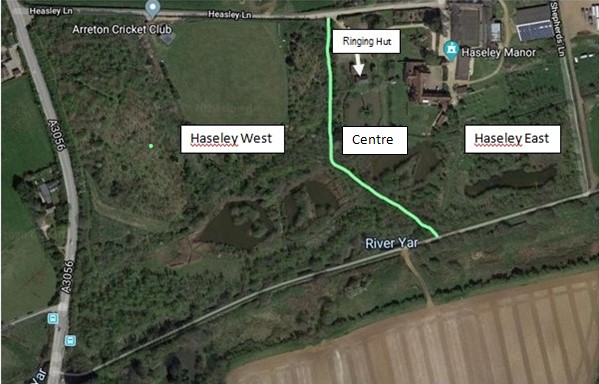
20200110 Haseley Reserve Nest Box Checking Session
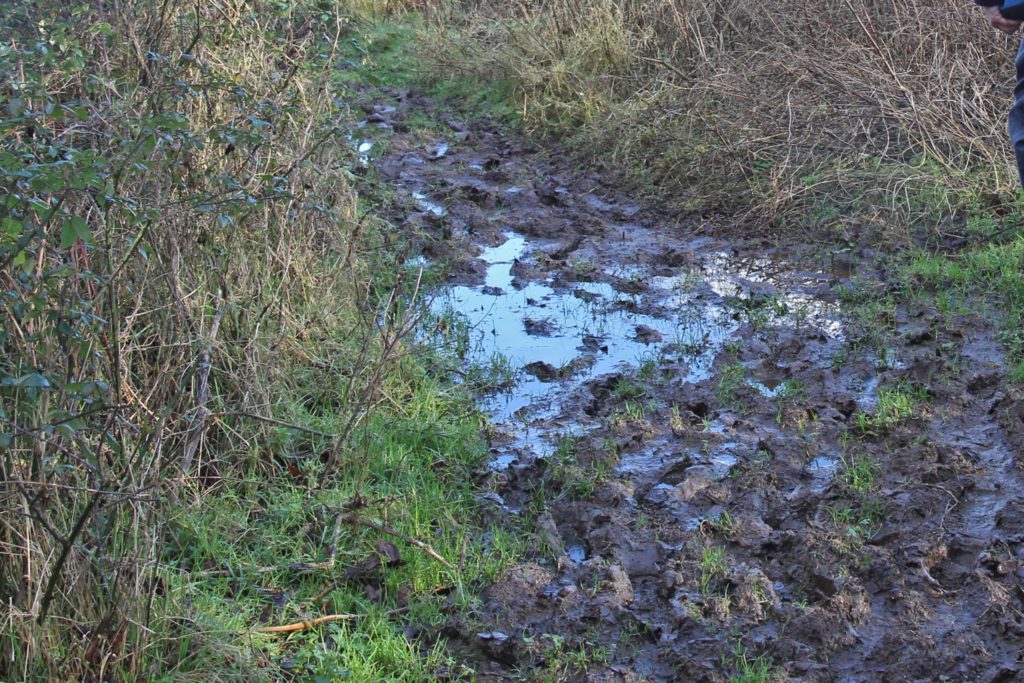
2020 has begun with mainly warm but wet and windy weather. For this reason, and because availability and willingness have not yet coincided with a suitable ringing day our first outing of the year was a well-attended joint Working Party with the dormouse enthusiasts to check nest boxes. Our bird nest boxes are now a significant part of the ringing year so it is fitting that we should start with them. In addition we have around 100 dormouse boxes and although they are labelled as such and have a hole facing a tree trunk rather than to the front the dormice and other rodents at Haseley do not discriminate between these boxes and the ones intended for birds so it makes sense for a maintenance party to examine both types of box at the same time. Since the Haseley Reserve is a refuge for all wildlife it seems right to document the use of the boxes. Licencing is via the British Trust for Ornithology (BTO) for birders and the Peoples Trust for Endangered Species (PTES) for dormousers.
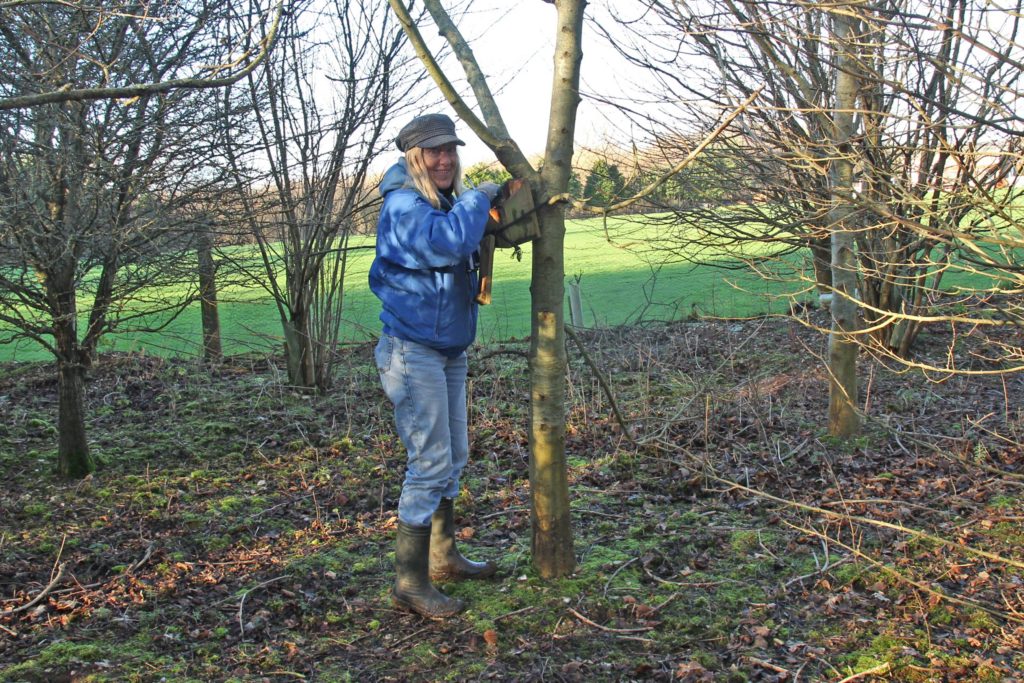
The Reserve was relatively quiet bird-wise and we were not actively birdwatching. There was a lone Pied Wagtail walking and feeding in the car park, a Song Thrush sang briefly nearby, and at the end we heard a ‘singing’ Collared Dove from near the house. Robin song was plentiful, Great Tits were just practicing, a Green Woodpecker laughed and Blackbirds alarmed at our presence. Water birds were conspicuous by their absence.
We split into two parties, Anthony, Chuck, Fiona, Jo, and myself working on and almost completing West and Jim, John, Tina and Patricia completing nest box checks on East and then helping on West. This piece reports my part in the session. It only covers Haseley West, and that not quite completely, so is representative of the Reserve but not comprehensive. A few members of IWRG are also qualified to handle dormouse and explore “their” boxes but I am not one of them. My role on this occasion was to keep a record of boxes needing major maintenance (reported elsewhere). However my amateur interest was sparked by the examination of box contents and the revelation (to me) that firstly almost all the boxes had been used by something and secondly that over the course of a year since the last box-clean there is evidence of at least three and perhaps four groups of animal using them at some time, namely dormice, wood mice, probably bank voles (though this evidence is harder to define), tit species (Great and Blue not separated on this day though of course we did so in summer) and slugs. The groups do not, by and large, coexist, but occupancy changes as the seasons roll on.
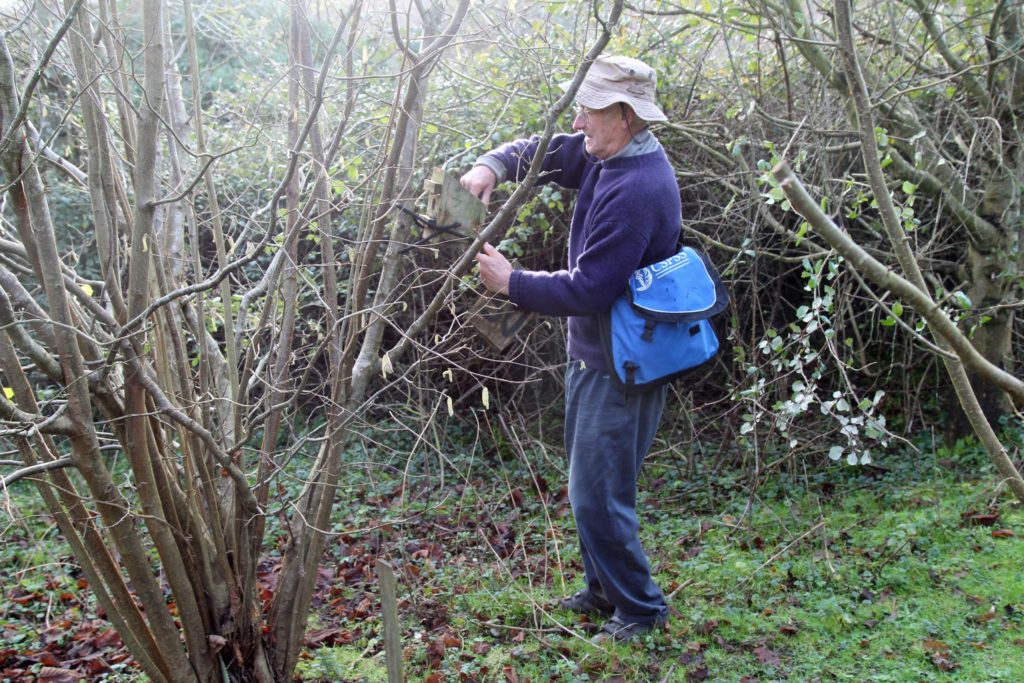
The majority of the boxes on West are on ‘Upper’ ie above the flood plain but tree planting 2001-2 and later was done on both levels, ‘Lower’ being flood plain and ‘Upper’ including spoil areas from the digging of lakes. Thus we categorise habitat for bird ringing on both levels as ‘New Plantation’ except for the reed beds and the two acres of shallow lake. This term describes well the nearly-twenty-year old tree growth present and makes the very high box occupancy immediately explainable. Without these boxes the only opportunities for hole nesting species would be on the slope (often logically called Slope) between Upper West and Lower West that marks the edge of the Eastern Yar flood plain. The slope includes what must be some of the UK’s finest field maples plus a few mature oaks, willows and alders but is a very small part of the total area.
I recorded a total of 98 boxes, 74 designed for dormice and 24 for birds including one large box intended for jackdaws (unused) and one specifically for Tree Creepers. In addition there was an old dormouse nest in the foot of a tree protector. there may be more but we only look at these when their function is over and they are removed.
One box has no comment recorded on my list.
Surprisingly only 7 were completely empty.
10 boxes contained only unidentifable debris. This represents use, since all boxes were cleaned a year ago, but I cannot be more specific.
The remaining 80 boxes
Contents were briefly assessed for evidence of the occupants. The criteria overlap and were formed by brief discussion as we went along so are by no means accurate or comprehensive. The dormouse evidence is under-represented because many boxes are later occupied by wood mice which I am told disturb, rearrange and add to the contents for their own use as winter refuges. They do not hibernate but may become torpid in cold spells. Note: Dormice do not hibernate in nest boxes, they use holes underground, where the humidity is higher, but I understand that in a warm spell they may explore and use boxes briefly.
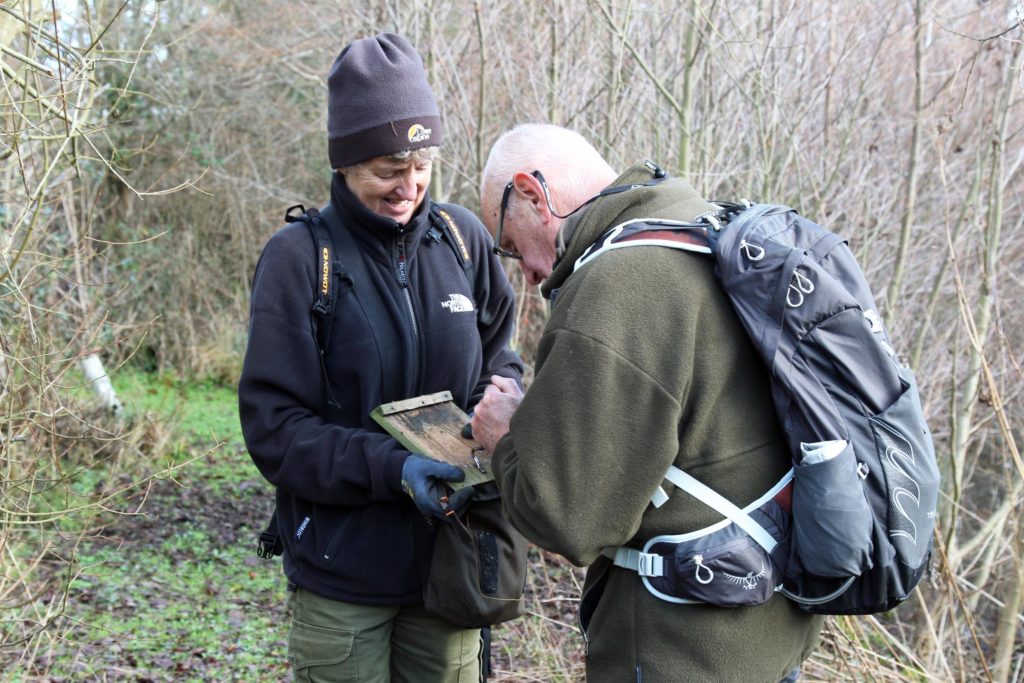
Evidence criteria;
Dormouse; woven fine grasses, chopped leaves
Wood Mouse; loose whole oak and hornbeam leaves, short cut grass
Bank Vole; suggested by the presence of longer (2.5cm) hollow grass stems and flat grass leaf?
Tit spp.; remnants of moss, hair, sheep wool as a matted platform
Wren; big nest, moss and feathers ++
Box usage;
5 boxes had evidence of dormouse only. One of these was the Tree Creeper box C28. All the others were designated dormouse boxes.
48 boxes had evidence of Wood Mouse only.
58 boxes in total contained evidence of Wood Mouse use.
8 boxes had evidence of both Tit spp.and Wood Mouse use.
16 boxes had been used solely by Tit spp. 13 of these were dormouse boxes and three were bird boxes.
2 boxes we thought had been used by Wrens
4 boxes we postulated may have been used by Bank Voles.
A lot of boxes contained a few slug droppings but we only saw slugs in two, in one box identified as young Leopard Slugs. This is in stark contrast to my boxes on Head Down where boxes overtaken by the competently-climbing Leopard Slugs are the norm and damp is a real problem.
Other thoughts
70% active box use by at least one species demonstrates how valuable our efforts are to the wildlife as the Reserve matures.
We know that our Dormouse population is one of the highest in the UK but looking at winter boxes in this way does not record peak usage because dormice do not hibernate in boxes and evidence is destroyed by Wood Mice taking over later. In the winter the wood mouse use is dominant (57%) and the total population must be huge. We found a single mouse in one box and three in another.
We know that box 32 was occupied by Tree Bees in summer 2019. Today there was no evidence of this at all but Wood Mice had been in residence and presumably consumed (or less likely removed) wax combs.
Two ‘wood mouse’ boxes contained hazel nut shells. One box had numerous halved cherry pips in the bottom, again assumed to be wood mouse.
One tit nest contained rabbit fur, two sheep wool (the nearest being several hundred yards away across the main road) and two had badger hair in such profusion that it must have come from a dead animal rather than gleaned from a fence or thorn.
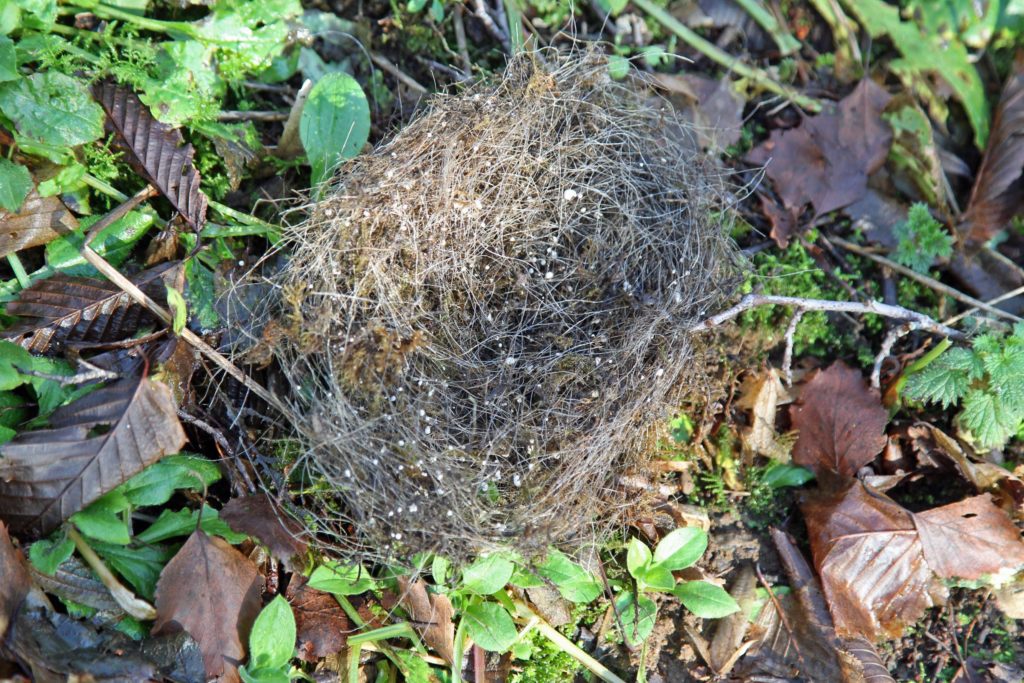
We know tits roost in nest boxes. We did find some green fresh-looking moss but surprisingly no bird droppings.
and finally
The nest box ‘regulars’ thought all this was pretty old hat and well-known already. To my fresh eyes it was an opportunity to look at winter wildlife on the reserve from a new angle. Thank you all for a fascinating morning. Daphne 20200115
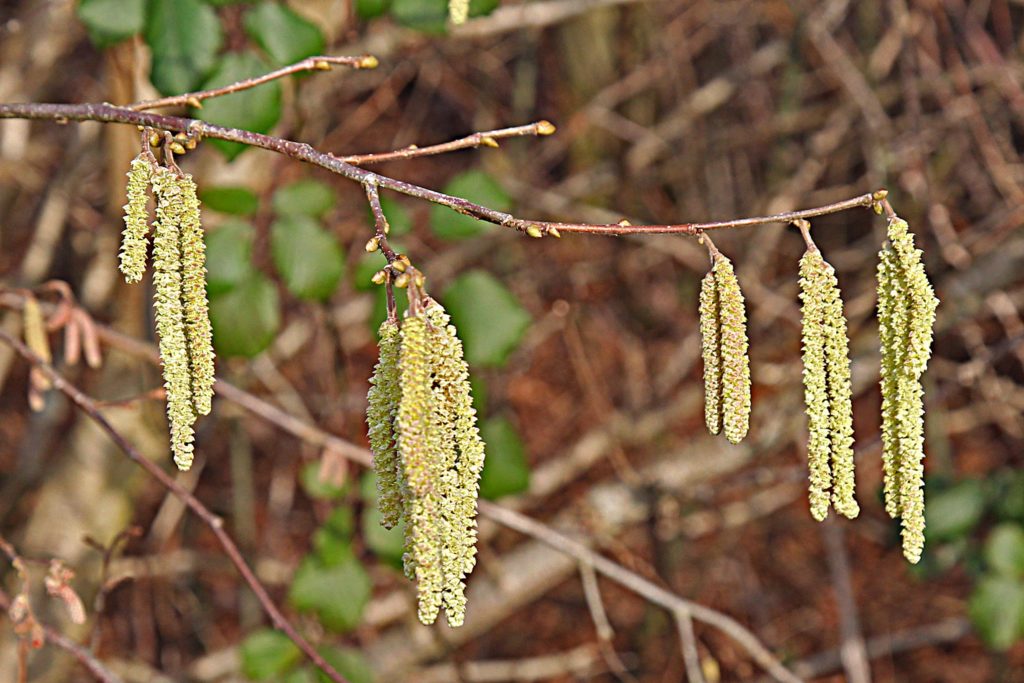
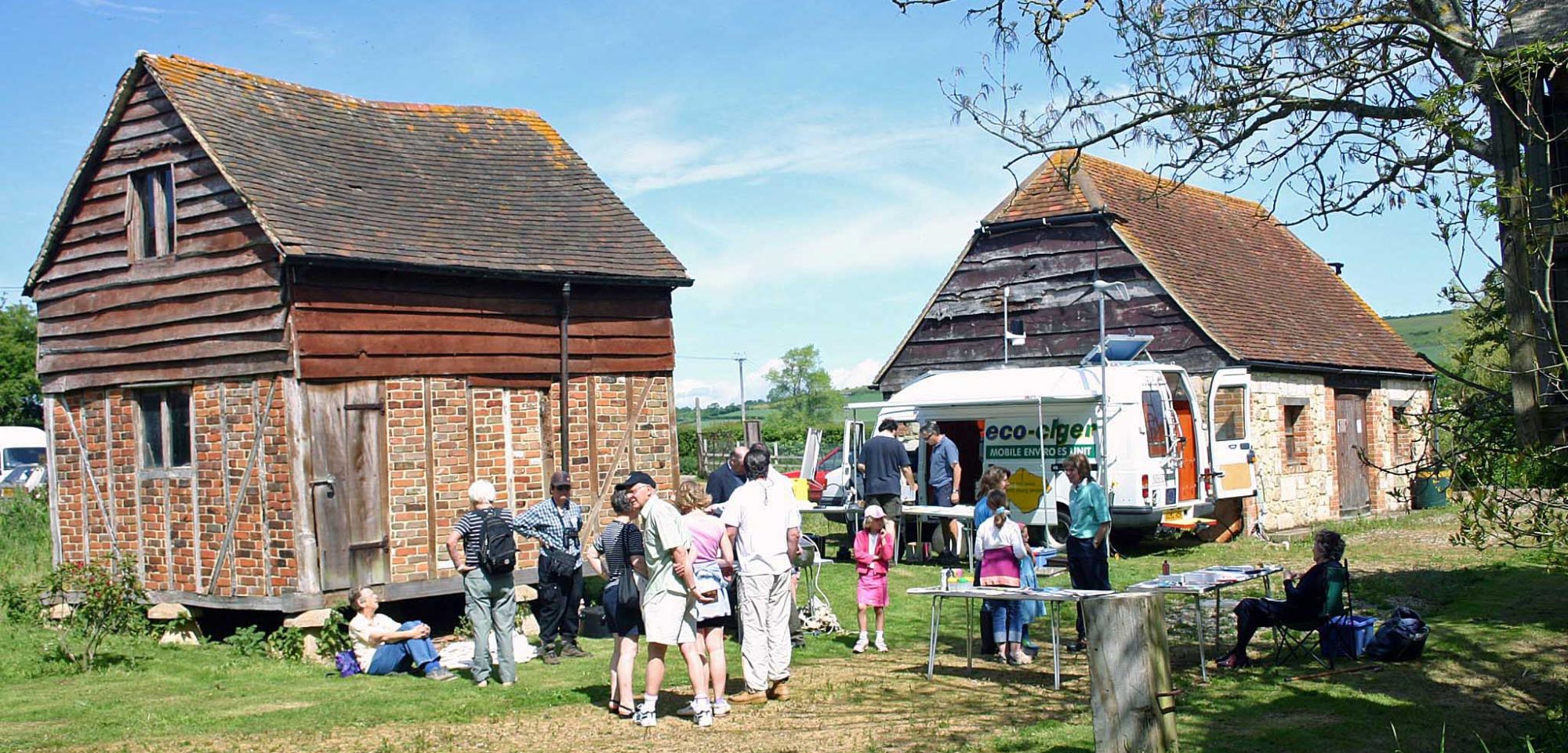

Related Posts